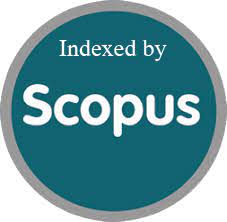Evaluation of Enhanced Recovery After Surgery (ERAS) Components in Hemodynamically Stable Subjects Undergoing Emergency Abdominal Surgery in VMKVMCH
DOI:
https://doi.org/10.52783/jns.v14.2194Keywords:
Enhanced Recovery after Surgery,, Emergency laparotomy, EvaluationAbstract
Introduction and Objectives- Intestinal obstructions and perforations are common acute abdominal conditions seen in our emergency department, carrying significant risks if not promptly treated. Implementing Enhanced Recovery After Surgery (ERAS) protocols in this context offers potential for reducing surgical stress response. To study on the evaluation of ERAS components in hemodynamically stable subjects undertaking Emergency abdominal surgery in a 30 care hospital.
Methodology: The study was a descriptive study done among 30 subjects with the main objective to study on the evaluation of ERAS components in hemodynamically stable subjects undertaking Emergency abdominal surgery in a 30 care hospital. The study included haemodynamically stable subjects requiring emergency abdominal surgeries and National Early Warning Score (NEWS) scoring-Mild to moderate. Subjects with elective gastrointestinal surgeries, haemodynamically unstable patient, Subjects not willing for surgery and NEWS scoring high risk- aggregate score>7. The subjects were assessed with preoperative, intraoperative and post operative ERAS protocols. The data was inputted into Microsoft Excel and analyzed utilizing SPSS 23.
Results: All the subjects had Patient, Family Education and Shared Decision, early imaging, anti-microbial prophylaxis, preoperative pain medication, nasogastric intubation, open surgical access, goal directed fluid therapy, warm IV fluids, non-opioid analgesia, received Ondansetron 4 mg iv as Post Operative Nausea and Vomiting(PONV), Post- Operative Analgesia, Thromboprophylaxis, Net Zero Fluid And Electrolyte Balance, Glycaemic Control and Sham Feeding. Among the subjects, 27 (90%) had quick Sequential Organ Failure Assessment (qSOFA) score 1 and 3 (10%) had qSOFA score 2. Among the subjects, 29 (96.67%) had score 0 and 1 (3.33%) had score 1.5 as Modified Wells Score for Venous Thrombo-embolism. Among the subjects, 6 (20%) received Fresh Frozen Plasma (FFP) Transfusion and remaining 24 (80%) received no anti thrombotic medication.
Conclusion: This study showed a significant alteration in management on the basis of preoperative, intraoperative and postoperative protocols by ERAS. When applied to trauma laparotomy, which involves surgical exploration of the abdomen due to traumatic injuries, implementing ERAS protocols has been demonstrated to have beneficial effects
Downloads
Metrics
References
Sharma J, Kumar N, Huda F, Payal YS. Enhanced Recovery After Surgery Protocol in Emergency Laparotomy: A Randomized Control Study. Surg J (New York, NY). 2021 Apr;7(2):e92–9.
Jones EL, Wainwright TW, Foster JD, Smith JRA, Middleton RG, Francis NK. A systematic review of patient reported outcomes and patient experience in enhanced recovery after orthopaedic surgery. Ann R Coll Surg Engl. 2014 Mar;96(2):89–94.
Shrime MG, Bickler SW, Alkire BC, Mock C. Global burden of surgical disease: an estimation from the provider perspective. Vol. 3 Suppl 2, The Lancet. Global health. England; 2015. p. S8-9.
Purushothaman V, Priyadarshini P, Bagaria D, Joshi M, Choudhary N, Kumar A, et al. Enhanced recovery after surgery (ERAS) in patients undergoing emergency laparotomy after trauma: A prospective, randomized controlled trial. Trauma Surg Acute Care Open. 2021;6(1):6–11.
O’Connell PR, McCaskie AW, Sayers RD. Bailey & Love’s short practice of surgery. CRC Press; 2023.
Kehlet H, Wilmore DW. Evidence-based surgical care and the evolution of fast-track surgery. Ann Surg. 2008 Aug;248(2):189–98.
Williams B, Alberti G, Ball C. Royal College for Physicians: National Early Warning Score (NEWS): Standardising the Assessment of Acute-Illness Severity in the NHS. 2012London. ENG, R Coll Physicians.
Wisely JC, Barclay KL. Effects of an Enhanced Recovery After Surgery programme on emergency surgical patients. ANZ J Surg. 2016 Nov;86(11):883–8.
Pranavi AR, Sureshkumar S, Mahalakshmy T, Kundra P, Kate V. Adapted ERAS Pathway Versus Standard Care in Patients Undergoing Emergency Surgery for Perforation Peritonitis—a Randomized Controlled Trial. J Gastrointest Surg [Internet]. 2022;26(1):39–49. Available from: https://www.sciencedirect.com/science/article/pii/S1091255X23002548.
Hajibandeh S, Hajibandeh S, Bill V, Satyadas T. Meta-analysis of Enhanced Recovery After Surgery (ERAS) Protocols in Emergency Abdominal Surgery. World J Surg [Internet]. 2020 May 1;44(5):1. Available from: https://doi.org/10.1007/s00268-019-05357-5
Mohsina S, Shanmugam D, Sureshkumar S, Kundra P, Mahalakshmy T, Kate V. Adapted ERAS Pathway vs. Standard Care in Patients with Perforated Duodenal Ulcer—a Randomized Controlled Trial. J Gastrointest Surg [Internet]. 2018;22(1):107–16. Available from: https://www.sciencedirect.com/science/article/pii/S1091255X23051259
Moydien MR, Oodit R, Chowdhury S, Edu S, Nicol AJ, Navsaria PH. Enhanced recovery after surgery (ERAS) in penetrating abdominal trauma: A prospective single-center pilot study. South African J Surg. 2016;54(4):7–10.
Downloads
Published
How to Cite
Issue
Section
License

This work is licensed under a Creative Commons Attribution 4.0 International License.
You are free to:
- Share — copy and redistribute the material in any medium or format
- Adapt — remix, transform, and build upon the material for any purpose, even commercially.
Terms:
- Attribution — You must give appropriate credit, provide a link to the license, and indicate if changes were made. You may do so in any reasonable manner, but not in any way that suggests the licensor endorses you or your use.
- No additional restrictions — You may not apply legal terms or technological measures that legally restrict others from doing anything the license permits.










